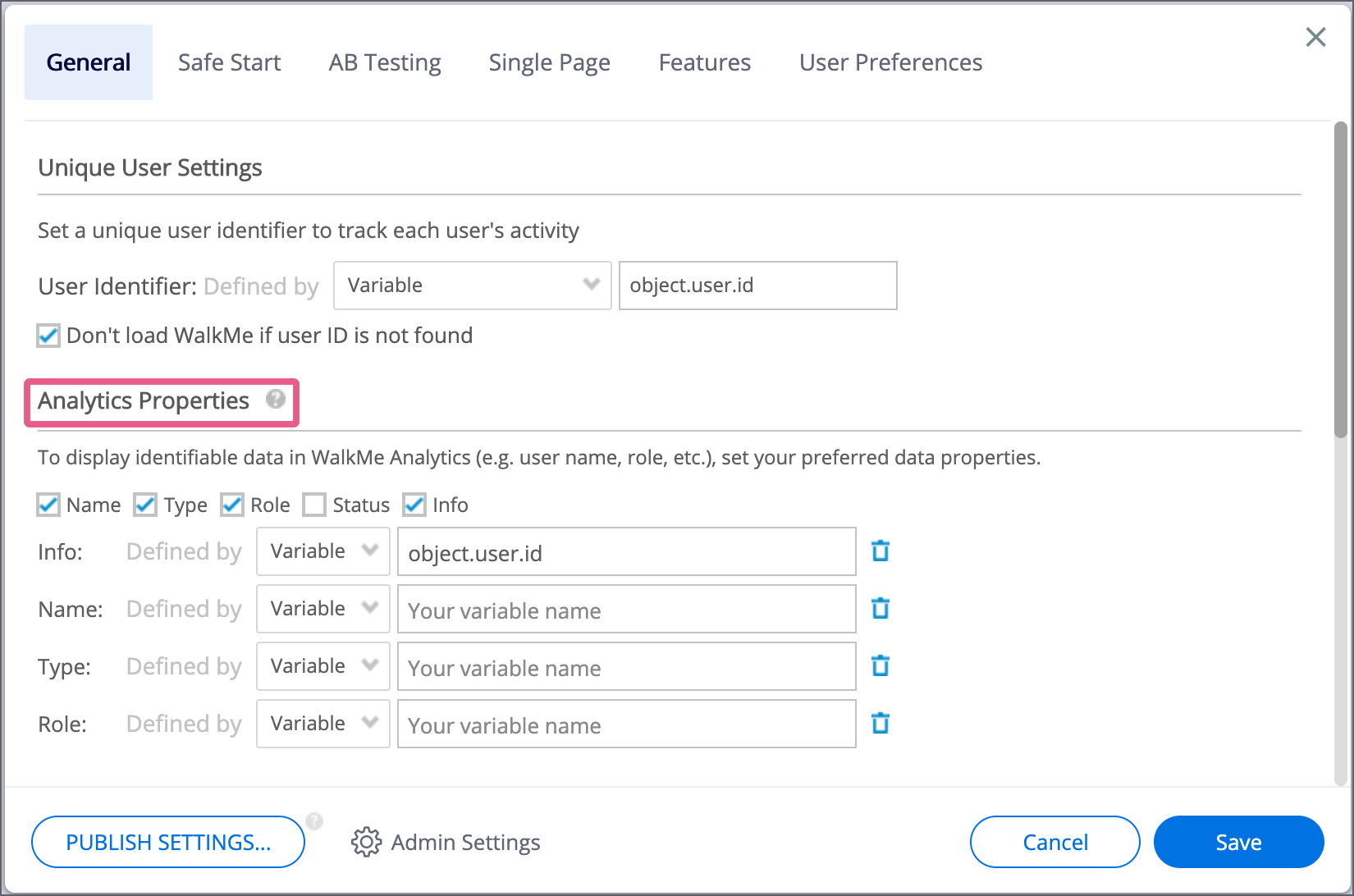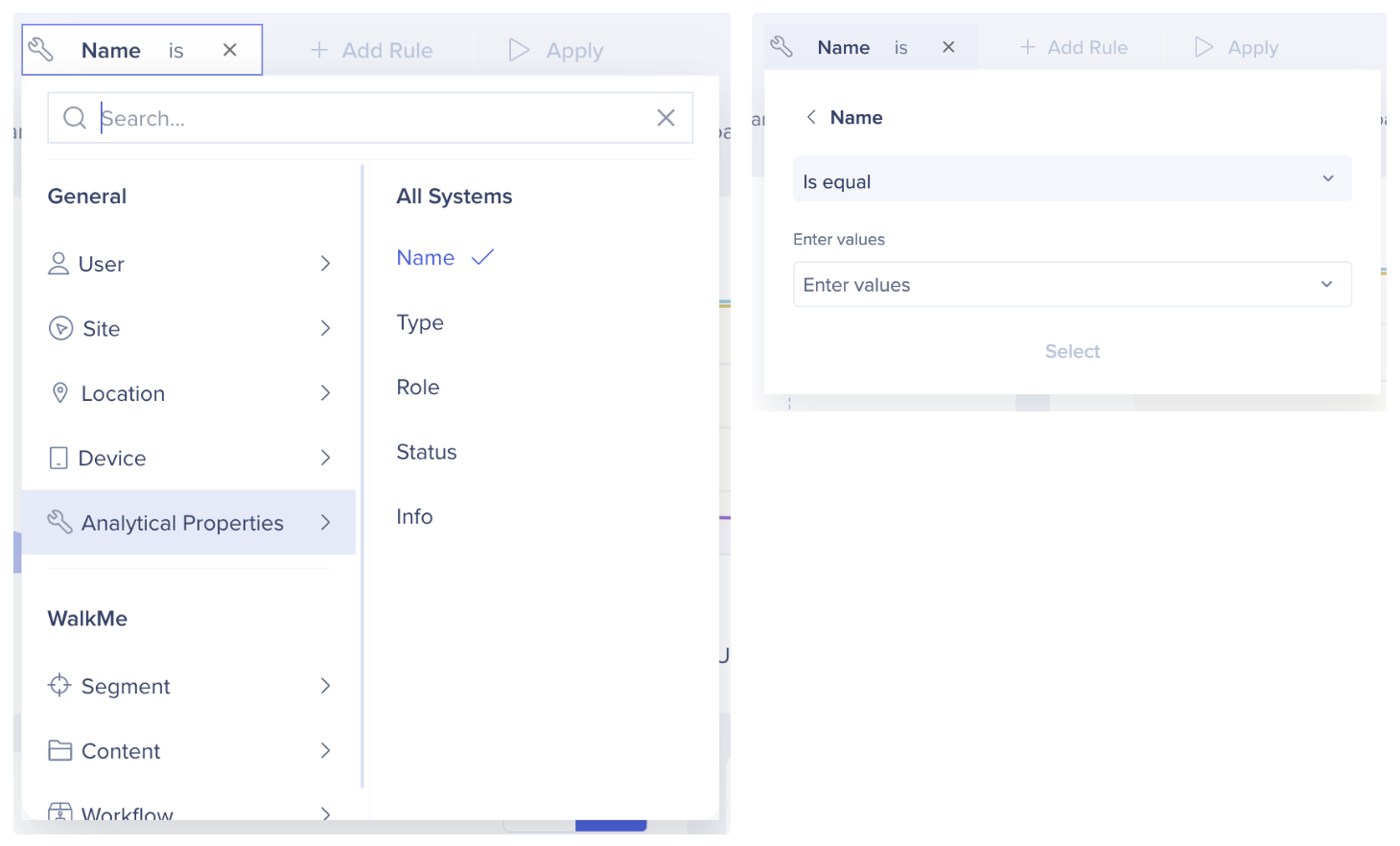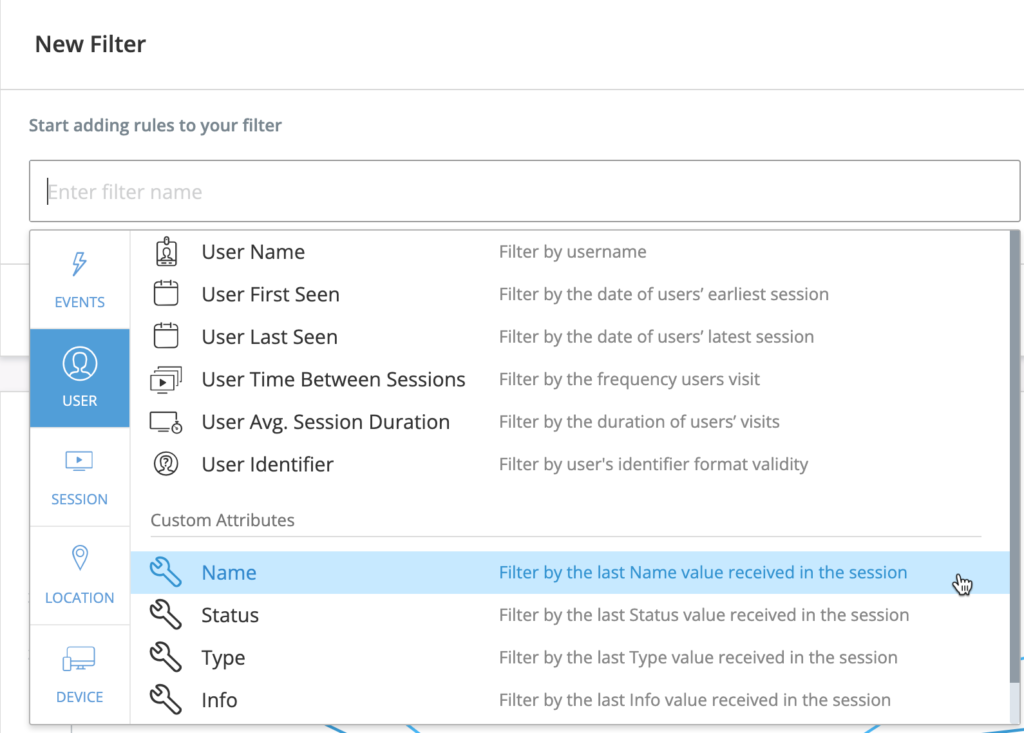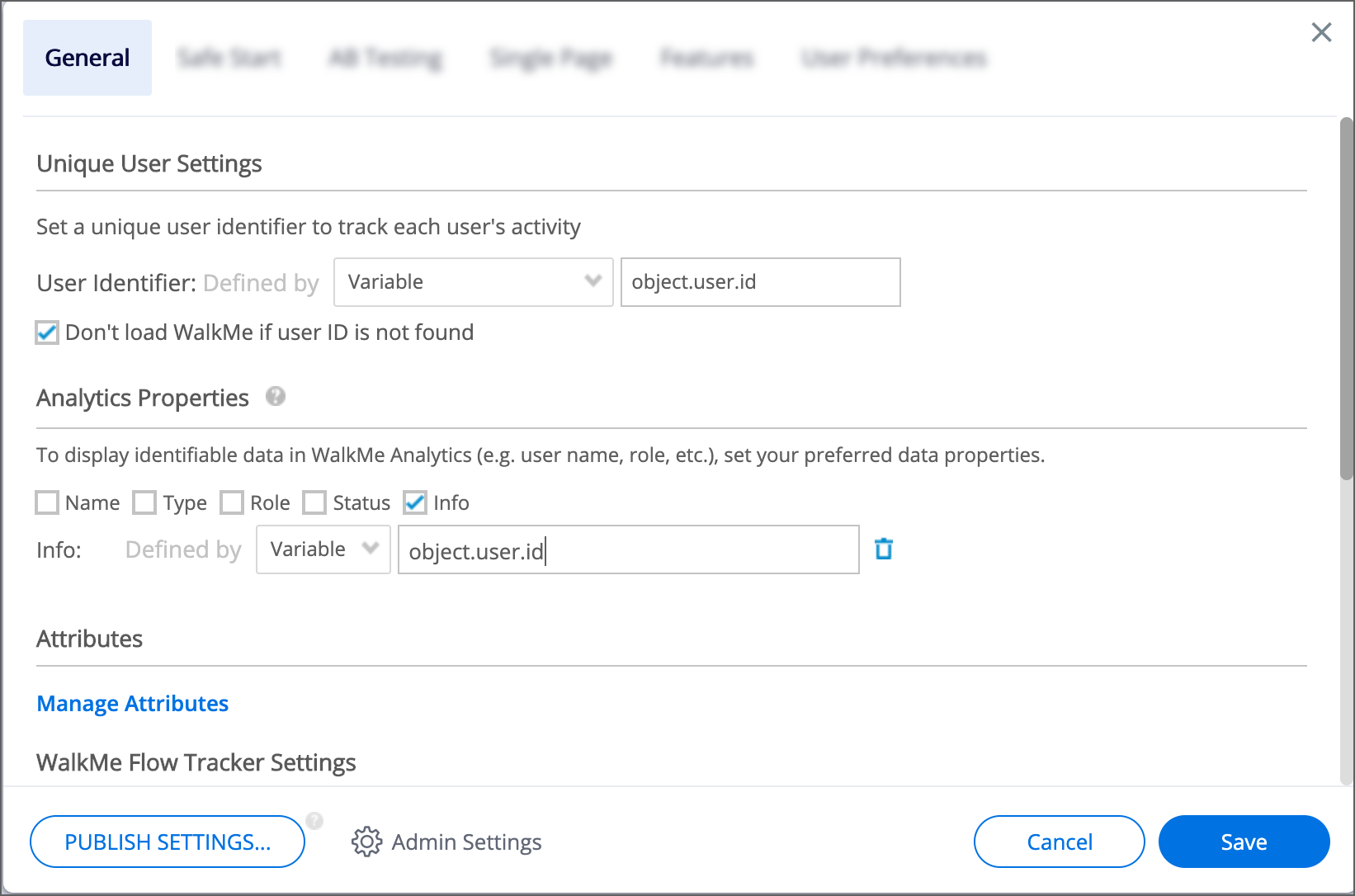Welcome to the
WalkMe Help Center
Please log in to continue

Please log in to continue

Use analytic properties as custom Insights attributes in the form of variables, jQuery selectors, and website cookies, to better filter your reports for more granular user information.
Connect an existing variable, jQuery selector, or website cookie to a analytics property in the WalkMe Editor to get more information about your users.
You can then use this information to create new saved filters. The analytics properties are available in filter properties → Session → Custom Attributes.

Open your WalkMe Editor
![]() Click the Settings icon
Click the Settings icon
Click System settings
Scroll to the Analytics Properties section
Check the boxes of the types of properties you wish to add
The options are Name, Type, Role, Status, and Info
Select a method by which to track the properties:
If you select Variable, enter a variable name
If you select jQuery, enter a jQuery selector
If you select Cookie, enter a cookie name
Click Save
For system dashboard:
Once you've created your analytics properties in the editor, go to the Systems overview page in the console
Select a system
Click + New Filter to create a new filter
Click Analytical Properties
Select which type of property you wish to add: Name, Type, Role, Status, and Info
Select an operator: Is equal, Is not equals, Contains, or Does not contain
Enter values
Click Select

Once you've created your analytics properties, you can access them by creating a new filter from your Insights account at insights.walkme.com.


Your new saved filter will appear in the filters dropdown along with the rest of your saved filters. You can use this filter anywhere filtering applies, for example, the Insights Overview page.
Analytics properties can also be added to Insights reports and are stored with the most recent value sent from the end user in Insight's end user object.
In order to improve performance, analytics property filters in Insights filter by the last value of the analytics property seen in the session, rather than all values in the session.
Example:
The Info analytics property shown in the screenshot below is configured to send the value taken from the user.info variable.
If the info field sends the value "freemium" in the first events of the session, but the value is changed to "premium" at the end of the session, the info property of the session would be the value "premium".
When the analytics properties filter is used in Insights with the rule: Info is "Premium", this session would be shown.
When Info is "Freemium" is used to define a filter rule, this session would not be shown.
